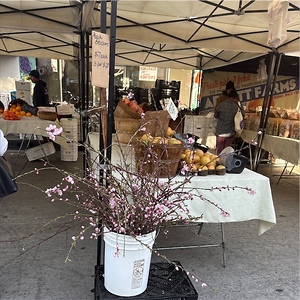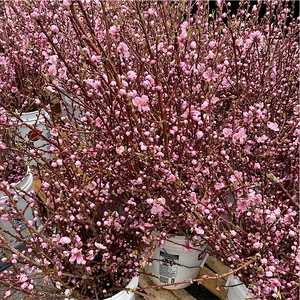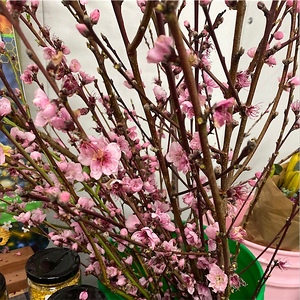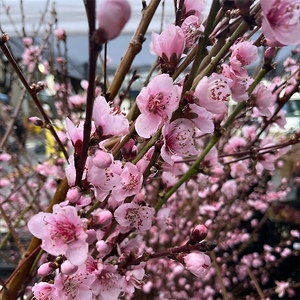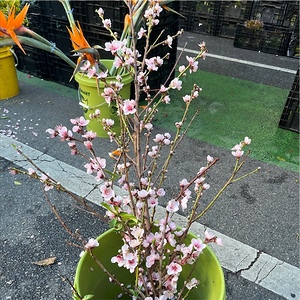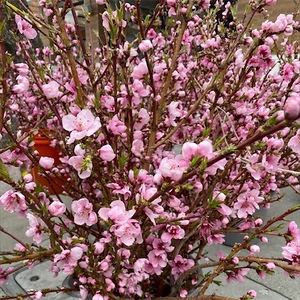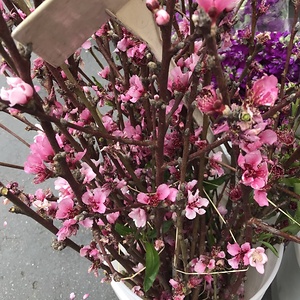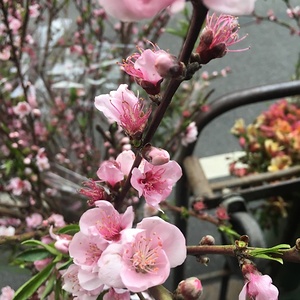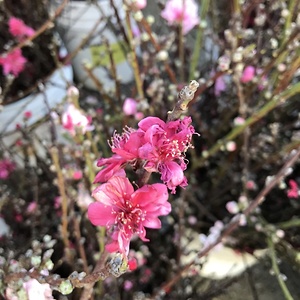

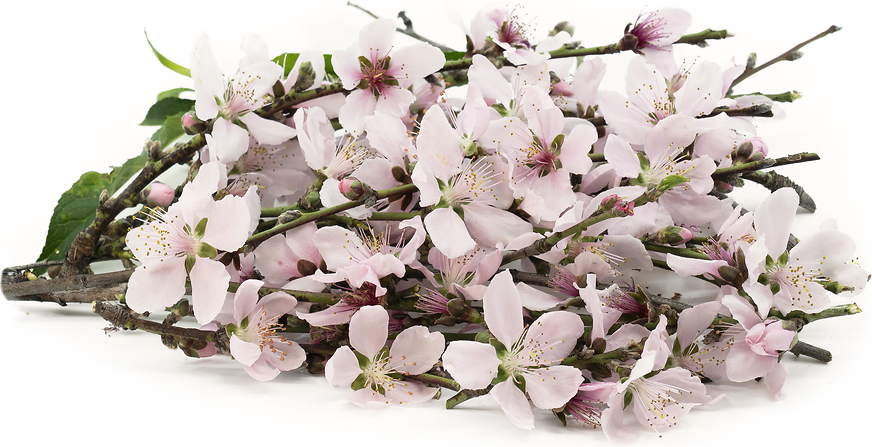
Peach Blossoms
Estimated Inventory, 50 ct : 0
Description/Taste
Peach blossoms vary in size from small to medium, measuring between 3 to 6 centimeters in diameter. Each flower consists of five delicate and paper-like petals with several stringy stamens toward its center. Depending on the variety, the showy blooms range in color from pale pink to hot pink, with deep magenta or pink blushing near its center. Peach flowers have a soft, delicate texture with a sweet aroma reminiscent of honey and almond. The flavor of Peach blossoms is mild with a nectar-like sweetness.
Seasons/Availability
Peach blossoms bloom from early March through April.
Current Facts
Peach blossoms bloom along the spindly branches of a deciduous tree botanically classified as Prunus persica. Peach trees are a member of the Rose family and are closely related to plums, cherries, apricots, and almonds. The Prunus genus includes over 400 varieties of trees and shrubs that grow to heights from 3 to 10 meters. Peach trees set buds in the summer and go dormant in the winter. The trees require a certain number of hours below 7 degrees Celsius in order to bloom. This time is referred to as chill hours, and some varieties can require up to 1,200 chill hours before the blossoms are triggered to open. Peach trees evolved to require these chill hours to protect the blooms from late-season frosts. New low-chill varieties of peaches have been developed that only require 450 chill hours, allowing peaches to be grown in warmer climates. Peaches are native to China, where the trees and all their components are highly revered and carry symbolic meaning. The fruit represents longevity, the wood was used to ward off evil and to manufacture weapons, and Taoist magicians used the petals of the blossoms in love potions. Peach blossoms are used in cosmetics, perfumes, potpourri mixes, ornamental bouquets, and culinary applications.
Nutritional Value
Peach blossoms have not been studied for their nutritional properties, but the flowers may contain small amounts of antioxidants to boost the immune system, reduce inflammation, and protect the cells against free radical damage. The delicate and papery petals are also traditionally used in natural medicines and teas to relieve symptoms associated with insomnia, digestive discomfort, and weight loss.
Applications
Peach blossoms are not a common culinary ingredient and are primarily utilized as an elegant garnish. The flowers can be placed whole as a decoration on cakes, pies, tarts, ice cream, crème brulee, and other desserts, or they can be used as garnishes on main dishes and appetizers. When used whole as a garnish, the flowers are not eaten in their entirety as the stamens, stigma, and anthers can impart a bitter flavor. The petals are the only part of the flower consumed. Peach blossom petals can be sprinkled over salads, fruit bowls, or layered into sandwiches. The petals can also be candied as a sweet garnish, infused into honey, scattered across cocktails, stirred into water, or frozen into ice cubes. Peach blossoms are often mixed with dried fruit pieces to make a tea, which can be served hot or iced. The subtle floral flavoring of Peach blossoms complements green, black, or white teas. Peach blossoms pair well with herbs such as mint, basil, and thyme, cinnamon, flowers such as lavender, elderflower, jasmine, and rose, lemon, oranges, quince, and pear. The flowers should be used immediately for the best quality and flavor.
Ethnic/Cultural Info
Peach blossoms are deeply engrained in the history and culture of China. The peach signifies longevity, fertility, and abundance, and the peach blossom has been a significant part of spring-time festivals and celebrations for thousands of years. The love of peach blossoms stems from an ancient myth about a peach tree that grew in the garden of the goddess Xiwangmu. This peach tree would produce peaches that granted immortality once every 3,000 years, and the goddess would invite the immortals of China to come feast on the peaches. Every year China celebrates the peach blossom starting on March 3rd, known as Peach Blossom Day. The Peach blossom is also a symbol of femininity in the culture, and women are celebrated during this time. Each region has its own festivals to celebrate the opening of these showy blossoms, notably the Gongcheng Festival in Guilin and the Nanhui Festival in Shanghai. The Nanhui festival has been celebrated for over 30 years. Visitors of the festival can explore the Chengbei Folk Peach Orchard, established in 2008, taking photos among the blooming trees, sipping fragrant Peach blossom tea, and enjoying the spring weather and sweet aroma of the blossoming orchard. The festival features traditional Chinese music and dancing, food vendors, and Peach-inspired art and trinkets. Nanhui is a coastal district that is traditionally agricultural, and local farmers often invite visitors into their homes to try fishing and farming. The festival also features the entertaining spectacles of pig racing and pig diving. The Nanhui Peach Blossom festival begins in late March or early April and runs for approximately two weeks each year.
Geography/History
Peach trees are native to China, with the earliest evidence of cultivation traced back thousands of years to the Zhejiang Province in the country's southeastern region. The plants were carried along the silk road to the fertile soils of the Mediterranean. The Romans were introduced to the fruit in 300 BCE when Alexander the Great conquered Persia. The tree's Latin name, Prunus perscia, translates to "present from Persia." The Roman empire spread the fruit to parts of Europe, and the fruit trees flourished in Spain. In the 16th century, the Spanish brought peach seeds to North and South America, where they naturalized in Chile and some coastal regions of the United States. The Spanish also introduced the trees to England, where the fruits became a prized delicacy. Commercial cultivation of peaches in the United States flourished in the early 19th century, and they are now a staple crop in California, Virginia, and Georgia. Globally, China is the leading producer of peaches, followed by Spain and Italy. Peach blossoms can be found anywhere peach trees are grown in farmer's markets and specialty stores.



